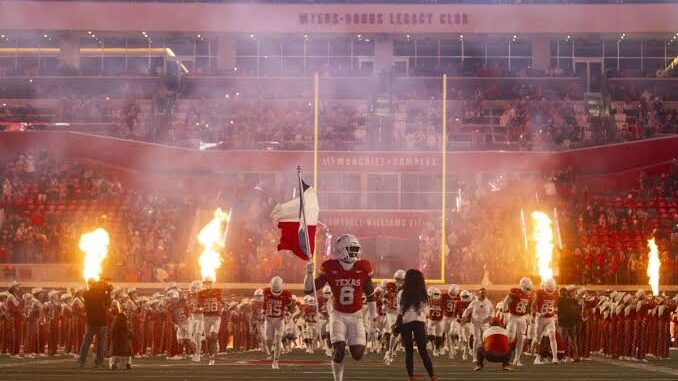
Obviously the Texas Longhorns don’t have much of a history yet in the Southeastern Conference since joining the league in time to compete for the 2024-25 academic year. But they do have an extensive timeline in regards to college football, with numerous notable achievements.
So that’s what we’re doing for this part of the History of the SEC series, a Texas timeline.
The program tradition dates back to Thanksgiving Day 1916, the final game of the football season and also when Robert Vinson became the new University of Texas president. Some 15,000 fans had packed the stands at Clark Field to watch the Longhorns (which was still an informal term and wouldn’t become the school’s official nickname for four more years) play rival A&M College of Texas, only to see the teams finish the first two quarters tied, 7-7. During the break, a skinny and frightened longhorn steer was brought out on to the field and presented to the student body as the school’s first live mascot. The idea had been the brainchild of former team manager Stephen Pinckney, who had collected $1 from 124 other alumni to purchase the animal.
According to Jim Nicar, the Director of the UT Heritage Society, Pinckney had spent most of the year in West Texas working for the U.S. Attorney General’s office assisting with raids on cattle rustlers. During one such raid near Laredo in late September, he found a steer with orange fur that was almost an exact match for the school color. The longhorn was loaded onto a boxcar without food or water and arrived just in time for the game.
Texas went on to win, 21-7.
The steer was subsequently moved to a stockyard for a formal photograph, where it proved to be more ornery than the Aggies, and after the camera flash went off charged the photographer.
In the subsequent issue of the “Texas Exes Alcalde” magazine, editor Ben Dyer gave a full description of the day’s numerous events, and regarding the steer simply wrote: “His name is Bevo. Long may he reign!” (Note: The origin of the Bevo name is still very much in doubt). While students debated about what to do with the wild animal, “The Texan” newspaper suggested branding the longhorn with a large “T” on one side and “22-7” on the other as a permanent reminder of the Texas victory. Instead, it prompted some A&M fans to break into the stockyard and brand Bevo with “13-0,” the score of the Aggies’ victory at College Station in 1915. A week later the longhorn was moved to a ranch 60 miles west of Austin, and mostly forgotten about during World War I.
Leave a Reply